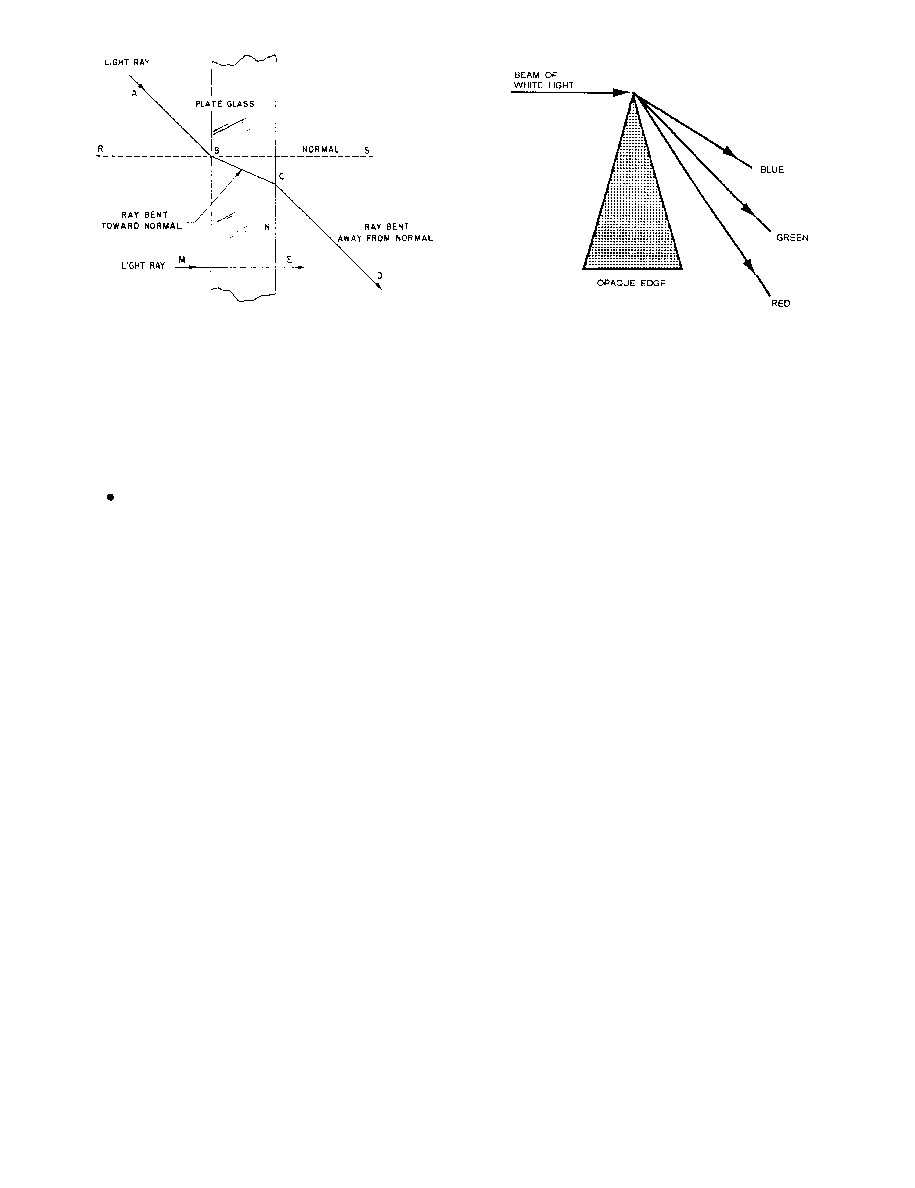
DOFMaster
for Windows
On-line
Depth of Field
Calculator
DOFMaster for Mobile Devices
On-line
Depth of Field
Table
Hyperfocal
Distance Chart
Articles
FAQ
Recommended
Books
Support
Contact
Links
Home
for Windows
On-line
Depth of Field
Calculator
DOFMaster for Mobile Devices
On-line
Depth of Field
Table
Hyperfocal
Distance Chart
Articles
FAQ
Recommended
Books
Support
Contact
Links
Home
As an Amazon Associate I earn from qualifying purchases.
![]()
light travels about 1 1/2 times as fast in air as it does in
glass, so the index of refraction for glass is about 1.5.
normal. In passing from one transparent substance into
another of lesser density, refraction is away from the
normal."
is denser than air, the ray of light is bent toward the
normal (RS) and emerges from the glass at (C). Upon
entering the air again, the ray is bent away from normal
(RS) and travels along the path (CD).
perpendicular ray (ME) that enters the glass normal to
the surface, no refraction takes place and the ray
continues through the glass and into the air in a straight
line.
medium, the short waves, such as blue, are slowed more
than the long waves, such as red. Thus the index of
refraction of a medium varies with the wavelength, and
the different colors of light are bent different amounts.
This changing index of refraction or the breaking up of
white light into its component colors is called
of the colors of light where we saw the way a prism
creates a spectrum from white light. The prism is able
to create this spectrum because of dispersion.
when light travels close to an opaque edge. Because of
the wave nature of their travel, light rays passing near
an opaque edge are bent ever so slightly (fig. 1-9). This
bending is called diffraction and is evidenced by the
formation of a shadow with a fuzzy edge when light
of the shadow is light and indistinct, but it gradually
darkens into the true black of the shadow that indicates
that some of the light is scattered into the shadow area.
lens diaphragm is opened fully, the amount (actually the
the diaphragm is closed to a small opening, the
percentage of diffracted light is quite large and reduces
the sharpness of the image formed by the lens. In other
words, a small aperture opening interferes with the
image-forming light more than a large aperture does.
Basic Photography Course

As an Amazon Associate I earn from qualifying purchases.
WWW.DOFMASTER.COM
© 2006 Don Fleming. All rights reserved.
© 2006 Don Fleming. All rights reserved.